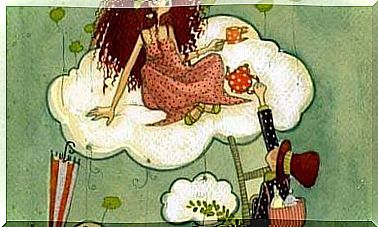Cannabis-tobacco Knot: What Is It And How To Untie It?

The association that can be generated by the consumption of the two drugs is called the cannabis-tobacco node. A pair that is currently quite common. Tobacco appears to increase the likelihood that marijuana will be used at some point. Therefore, a dual dependency issue occurs.
Traditionally, cannabis was not considered a risk factor for smoking. However, it is now known that there is a double influence on the part of both substances. Probably, this compound is a risk factor for the use of these drugs due to individual, contextual and substance-specific factors, regardless of which drug the consumption started.

Cannabis-Tobacco Knot Effects
The cannabis-tobacco knot projects a special situation. In addition to the effect that the separate consumption of each of the substances can have, there are also consequences that are characteristic of their interaction in the body.
Nicotine
On the one hand, nicotine stimulates the central nervous system, causing improvements in motor and sensory tests, facilitating memory and improving attention. It also stimulates the peripheral nervous system, increasing heart rate and blood pressure. In addition, nicotine produces tolerance: the body gets used to this substance, needing an increasing amount to obtain the same effects.
The mechanism by which the body, or rather the brain, develops dependence on this substance is by causing an increase in dopamine in the mesolimbic pathways or in the reward system.
cannabis
Cannabis is a central nervous system depressant. Thus, it causes an altered state of consciousness, euphoria, changes in perception. Furthermore, it intensifies sensory experiences, impairing attention and memory.
It generates crises or increases in anxiety, panic or psychosis, the intensity of which depends on several factors, such as the dose consumed or the consumption history.
At the peripheral level, cannabis causes increased appetite, decreased pain, decreased blood pressure and heart rate, vasodilation, etc.
Joint or synergistic effects
In the short term, the effects of joint use of marijuana and tobacco are doubtful. It is argued that tobacco could increase the reinforcing effect of cannabis due to dopamine. In turn, cannabis increases the addictive potential of nicotine.
On the other hand, it is also considered the possibility that one attenuates the other’s adverse effects, modifying the degree of tolerance or dependence produced. More research is still needed in this regard; for this reason, in 2015 the ÉVICT Project was created, a working group for the study of polyconsumption of marijuana and tobacco in Spain, financed by the National Plan on Drugs.
In the long term, the cannabis-tobacco knot is associated with respiratory and periodontal problems. Furthermore, although the results are not conclusive, it has been linked to the development of psychotic disorders and neurocognitive deficits.
Cannabis-tobacco knot risk factors
Many studies have been carried out trying to clarify which factors are related to marijuana and tobacco use, but there is no consensus on this. So far, the results suggest that the factors are those applicable to any type of substance.
Among the aspects to be highlighted are gender, age and culture, both in terms of risk and protection factors. These variables and others, such as biological and genetic, must also be taken into account when developing prevention programs.
At the social level, family structure and unity, discipline, affective relationships and communication styles, family attitudes and behavior in relation to consumption can also influence.

How to undo this knot?
It is important that institutions promote regulatory measures for the trafficking and consumption of substances, in addition to preventive measures from the school stage.
The most effective treatment for breaking the cannabis-tobacco knot involves dealing with the two substances together or sequentially (leaving one substance and then the other), which is common in addiction treatment. It combines individualized psychological and pharmacological treatment, taking into account personal and contextual factors.
Psychological intervention proved to be effective. Generally, motivational interviews, cognitive-behavioral therapy, and encouragement-reinforcement therapy are included. On the other hand, pharmacological treatment is well established for nicotine use, but although the results are promising, its effect is not so clear in combating cannabis addiction.









